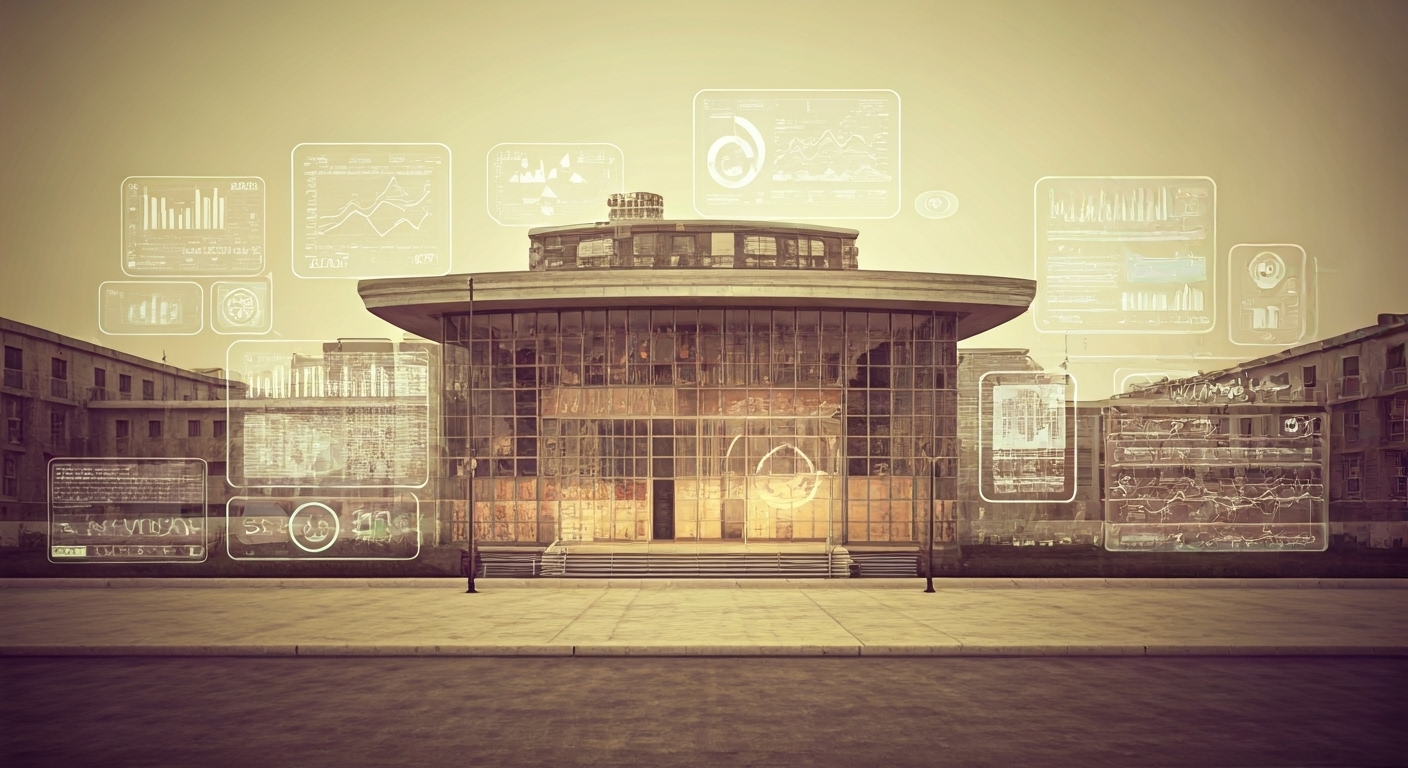Understanding Energy Data Management for Businesses Today
Understanding Energy Data Management for Businesses Today

Key Highlights
- Energy data management is a pivotal tool for enhancing operational efficiency and reducing energy costs across businesses.
- It enables organizations to systematically collect and interpret energy data, supporting analytics that drive informed decisions and cost reduction.
- By focusing on sustainability and regulatory compliance, energy data management helps businesses align with long-term environmental goals.
- Companies adopting energy data management systems benefit from improved transparency and streamlined workflows.
- Advanced analytics and reporting capabilities deliver actionable insights, optimizing energy usage and performance.
- Integration with maintenance systems ensures enhanced equipment efficiency and reduced energy waste.
Introduction
Energy Data Management (EDM) is now key for running a business in today's world. It involves the way you collect, look at, and make sense of energy data. When businesses use data management like this, they see a significant impact with big gains in energy efficiency and lower their costs.
This smart way of doing things helps companies use less energy and still keep up with their sustainability targets. EDM, as a central aspect of energy management, helps people make better choices and move toward a world with less carbon. The value of EDM goes beyond saving money. It support building a future where your business is smarter with its resources and focused on long-term goals.
By making energy data part of your day-to-day work, you help your company be more active in energy management, use less, spend less, and be more friendly to the environment.
Defining Energy Data Management in Modern Business

At its core, data management for energy is about how you collect, look at, and make sense of energy data to help you make smart choices. This step-by-step process lets a company use less energy, save money on what they spend to run things, and reach its sustainability goals. When using cloud-based tools, they can get the information they need about their energy consumption and learn how they use energy. These tools help a business work better and be kinder to the environment.
Modern EDM systems are built to grow with the business, and they can do real-time checks, too. Companies use these newer tools to check, keep, and share information about energy for many different needs. EDM has become key in the way businesses handle their energy data now.
Key Terms and Concepts Explained
Understanding EDM starts with knowing some key words. Energy data means the details we get about how we use energy. This data comes from things like sensors, meters, or IoT devices. Having this data helps people see where energy is wasted and shows where things can get better.
Energy management is the bigger job of keeping track of energy use. It is about watching and controlling energy use to save money and hit sustainability targets.
The interpretation of energy data is also important. It is about looking at all the energy data to find meaning and helpful answers. For example, when you find the times when energy use is highest, a business can plan when to use less energy. This helps people move from just collecting data to making good changes.
Data management is needed for all the large energy data businesses get. This step keeps things organised, clear, and correct. By using tools such as real-time analytics, AI checking, and dynamic number crunching, companies can make work easier. They also get full reports and create more transparency in how they use energy. This means better management of energy consumption and better, cleaner workflows in energy management.
Evolution of Energy Data Management Practices
Energy data management has changed as the energy industry changed. In the past, companies would use handwritten logs and spreadsheets to track energy data. That way was full of errors and did not help much with cost reduction or making things better over time.
Now, with best practices in the energy industry, data collection is done in a smarter way. Companies use sensors and automated systems. These tools let people get better and more correct measurements of energy consumption. When you use the right data collection tools, you can know what you need ahead of time.
These days, EDM uses things like AI and cloud-native technology for energy data. With these new tools, businesses get data validation, reporting, and real-time analytics. This all-in-one way to use technology lets businesses take care of many complex things, like working with rules and saving money. They set up a good way for people to get the most out of their energy and work smarter.
Why Energy Data Management Matters for U.S. Businesses

For U.S. companies, EDM helps with operational efficiency and staying on top of rules. When you use your energy data well, you can make better use of your resources. This can lower your energy costs and help boost how well your team works. All of this can improve profitability.
Also, regulatory compliance is very important. There are strict energy policies that make you track and control your energy consumption closely. A good EDM tool helps you stick to these rules and supports your goals for sustainability. This can help your business have an environmentally friendly way of working.
Cost Savings and Operational Efficiency
Energy data management is key to cutting costs and making daily operations more efficient. By looking at precise data, a company can find out where it is not working well and fix those parts. For example, you may adjust how equipment gets used at busy hours to lower energy costs.
- When a company makes energy use better, utility bills go down. This helps a company’s bottom line in a good way.
- A better workflow cuts out waste by showing which systems or machines do not do well.
- Predictive insights help companies change where they use energy, so it matches changes in what people need.
Also, EDM gives long-term savings by making operations more open with strong reporting tools. When a business must make important choices, it can use these facts to make sure they are smart about energy spending and get the most from it.
With data management, energy data is used well, which keeps a company on top of cost reduction, clear action, and better day-to-day work.
Compliance with Regulations and Sustainability Goals
Regulatory compliance is a big concern for businesses now, especially with more strict rules around energy use. EDM tools help track energy consumption and make sure that companies follow all legal rules. This helps to protect companies from penalties and also makes it clear who is responsible for what.
Sustainability is also a very important focus in energy management and optimization. EDM systems give real-time data, so organisations can lower their carbon footprint in a better way. With the right analytics, it is possible to use less energy and still keep things running well. Doing this, plus following eco-friendly ideas, is easier when you have good details from these systems.
Transparency in energy management gets better with dashboards and reports that show all the needed details. These tools make it clear how much progress a company is making towards its sustainability goals. Decision-makers get the right information and can use it to make their energy and sustainability plans better.
Core Components of an Effective Energy Data Management System
A strong energy data management system has three key parts: data collection, analytics, and workflows. Sensors and meters keep track of energy consumption all the time. This helps you always have up-to-date energy data. The information that is collected then goes into real-time analysis tools. These tools use their own set of algorithms to help you get clear, useful insights from the energy data.
Workflows help connect each step, from making reports to making choices. Advanced dashboards show you energy patterns in a way that is easy to understand. This lets businesses look at their energy use and make plans to get better results. When you use data management with these parts—data collection, analytics, and workflows—you get a better way to handle energy management and improve how your business uses energy.
Data Collection and Integration Tools
Data collection in energy management revolves around sensors and meters capturing real-time energy consumption. These devices help organisations identify patterns, such as peak usage times or inefficiencies in equipment performance.
Integration tools ensure seamless interaction between data sources like IoT devices and analysis platforms. By combining diverse data streams, businesses gain holistic insights.
| Tool Category | Functionality |
|---|---|
| Sensors & Meters | Capture real-time energy usage with precision |
| Integration Platforms | Align data from multiple sources for comprehensive analysis |
| Analytics Tools | Predict trends, assist in decision-making, and support optimisation processes |
Analytics, Reporting, and Visualization Capabilities
Analytics tools are at the heart of EDM. They find patterns in energy consumption that help people make better choices. AI-driven analytics can predict trends. They also forecast future energy needs with good accuracy. This helps with planning for what may happen next.
Workflows for reporting give insights that can be used right away. Reports that look at energy eating and cost reduction keep things clear for everyone. They also help businesses make their processes better.
Visualisation tools make data clear and easy to see. Dashboards show complex numbers in a simple way. Businesses can quickly understand their energy usage. This makes it easy for them to make smart changes on time. Transparency is improved and businesses can work towards cost reduction and better energy use.
Conclusion
To sum up, it is important for businesses to understand energy data management. This helps your business use less energy and reach your sustainability goals. Good data management can also save you money and help your work run smoother. You will follow the rules set by others too. When you use advanced analytics and reporting tools, you get clear information. This makes it easier to make choices that will help your energy performance get better. The area of energy management keeps changing, so you should keep learning the best practices and look for new ideas. This will help you use your energy data in the best way possible. Do you want to improve your energy management? Get a free consultation now and see how you can get more from your energy usage!
Frequently Asked Questions
What types of data are most important for energy management?
Key data for energy management is made up of facts about energy consumption, equipment performance, and when you use the most energy. The right way to do data collection is to use sensors. This gives you helpful information. It lets an organisation know what steps to take. With these facts, they can make choices to get the most out of their energy use and keep things running well.
How does energy data management help reduce energy costs?
Energy data management helps to lower costs. It does this by finding waste, looking at how you use energy, and putting smart plans in place. Real-time analytics give you clear details about your energy consumption. This helps your business match how it works to save money and meet its goals. Using data management and analytics lets you get the most out of your energy data and better understand your energy usage.
Is energy data management only relevant for large businesses?
No, energy data management can help businesses of any size. Small companies can use it to make better use of energy, lower costs, and support sustainability. Big organisations use EDM for transparency and to see real improvements in their results. Data management, energy data, sustainability, and transparency all play a part in this.
What role does software play in energy data management?
Software helps make energy data management easier. It does this by taking care of data collection, looking at analytics, and making reports. Cloud-based solutions make it simple to have transparency in the process. With these tools, organisations can control energy consumption better and meet compliance needs with less effort.
How frequently should businesses review their energy data?
Regularly checking energy data is very important. Best practices say you should look at this data often, like each month or every three months. Doing this helps you see long-term progress and makes it easier to understand what the data shows. Watching your energy data all the time helps businesses stay focused on their energy efficiency goals.



